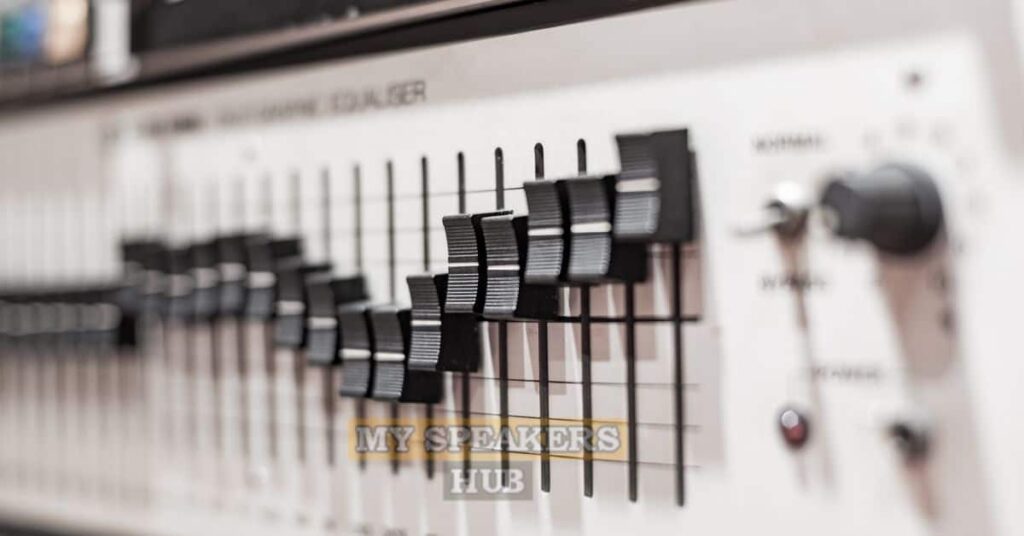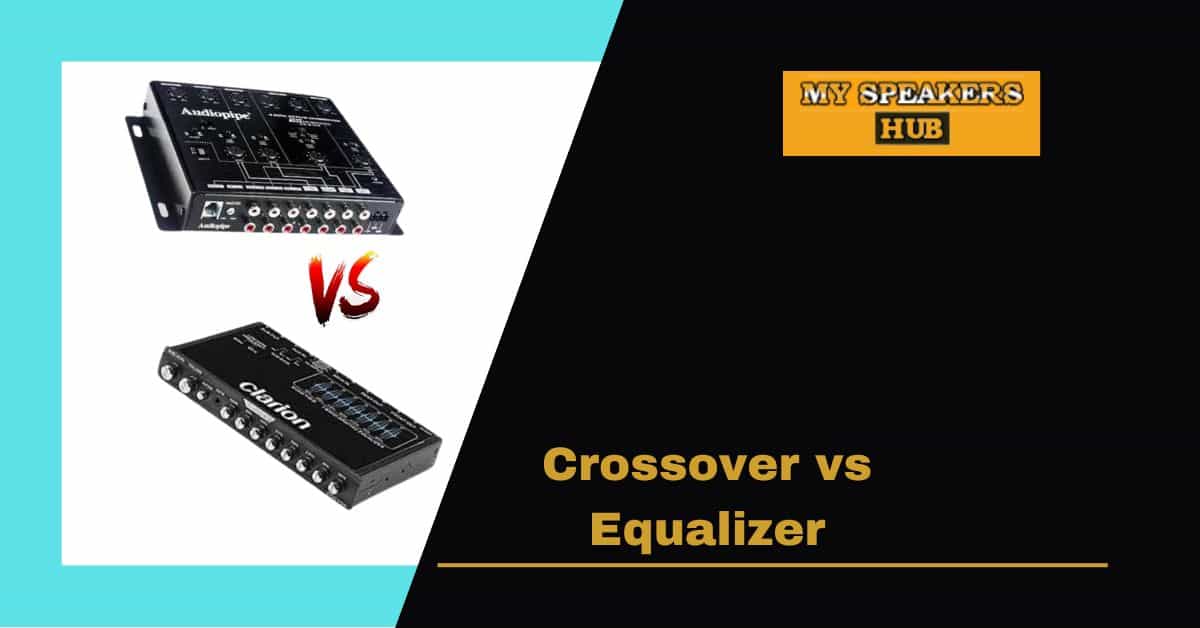Welcome to the debate between Crossover and Equalizer! Both of these devices are used to optimize audio systems and can be used to improve the sound quality of your favorite music. We’ll discuss how each device works and which one is best for your needs. So buckle up as we dive into the differences between Crossover and Equalizer!
Why You Should Care About Crossover vs Equalizer: The Pros & Cons of Each
When choosing an audio device, one of the most important considerations is whether to use a crossover vs equalizer. A crossover is a device that divides the incoming signal into separate audio frequency bands, while an equalizer is a device that boosts or reduces the level of specific audio frequencies. Both are important for getting the best sound quality out of your speakers or headphones, but there are pros and cons to each.
The major benefit of using a crossover is that it can help improve the sound quality of your audio system. By separating the signal into different frequency bands, you can adjust the level of each band to get the best sound from your speakers or headphones. This can provide a much more balanced sound, as well as improved clarity and detail. Additionally, crossovers are typically more efficient than equalizers, meaning they can produce better sound with less power.
On the other hand, an equalizer can provide more precise control over the sound of your audio system. By boosting or reducing specific frequencies, you can tweak the sound to your exact preferences. This can be particularly useful for compensating for any deficiencies in your audio system, or for achieving a specific sound.
In the end, the choice of crossover vs equalizer will depend on your specific needs. If you are looking for a more balanced sound, then a crossover may be a better choice. If you are looking for more precise control over the sound, then an equalizer may be a better option.
The Basics of Crossovers: What They Do & How to Set Them Up
Crossovers are electronic devices used to separate audio signals into different frequency bands that can be sent to different speakers or amplifiers. They allow audio systems to be tailored to specific sound requirements, allowing the user to manage the sound image and tonal balance of their system. Crossovers are commonly used in PA systems, home theater systems, car audio systems, and other audio applications.
When setting up a crossover, the user will need to consider several factors, including the type of crossover, the crossover frequency, the crossover slope, and the crossover type. The type of crossover will depend on the number of channels that need to be separated. The crossover frequency is the frequency at which the signal is split between the two channels. The crossover slope is the rate at which the signal is attenuated outside of the crossover frequency, and the crossover type determines the way the signal is split between the two channels.

Once the crossover has been selected, the user will need to set up the amplifier or speakers to receive the crossover signal. This can be done by connecting each channel of the crossover to the appropriate amplifier or speaker. The user will then need to adjust the level of each channel and the crossover frequency to achieve the desired sound.
Finally, the user will need to ensure that the crossover is properly balanced. This involves adjusting the gain of each channel of the crossover to ensure that the sound from each channel is balanced. This will help to ensure that the desired sound is achieved, as well as reduce distortion.
Equalizers Can Enhance Your Audio Setup & Improve Your Listening Experience
An equalizer is a type of audio device that helps to adjust the frequency response of an audio system. It works by allowing you to adjust the volume of specific frequencies in order to create a desired sound. Equalizers can be used to shape the sound of a system, allowing you to fine-tune your audio setup and tailor it to your individual listening preferences.
Using an equalizer can help to improve the overall sound quality of your audio setup, allowing you to get the most out of your audio components. It can help to bring out the details in the music, making it sound more dynamic and lifelike. It can also help to reduce distortion, allowing you to hear the music more clearly.
Equalizers can also be used to adjust the sound of a system to better suit the room that it’s in. Depending on the shape and size of the room, certain frequencies may be more prominent while others may be weaker. An equalizer can be used to balance out the sound, creating a more even and consistent sound throughout the room.
Overall, using an equalizer can greatly enhance your audio setup and improve your listening experience. By allowing you to tailor the sound to your individual preferences and the room that it’s in, you can get the most out of your audio components and enjoy a more immersive sound.
Tips & Tricks for Getting the Most Out of a Crossover or Equalizer
The use of a crossover or equalizer can be a great way to optimize the sound of a system. To get the most out of these tools, there are several tips and tricks that one should keep in mind.
First and foremost, it is important to consider the environment in which the system is being used. Depending on the size of the room and the type of equipment, different settings may be necessary to achieve optimal sound quality. For example, if the room is large or the equipment is high-end, then a higher crossover or equalizer setting may be necessary to ensure the sound is not lost in the mix.
Another tip is to experiment with the settings. Every system is different, so it is important to try different settings and find the one that works best for the particular setup. Additionally, it is important to pay attention to the frequency range of the crossover or equalizer. Adjusting the crossover frequency, for example, can have a big impact on the sound quality, so it is important to find the sweet spot for the particular system.
Finally, it is important to make sure the system is properly calibrated. Many crossovers and equalizers have a built-in calibration feature that can help to ensure that the system is producing the best sound possible.
Choose Between Crossover vs Equalizer: A Comprehensive Guide
A crossover is a device that splits a signal into two or more frequency bands. This allows you to send different frequencies to different speakers or amplifiers. An equalizer is a device that allows you to boost or cut certain frequencies of a signal. This allows you to tailor the sound to your personal preferences.
The first step in deciding between a crossover or an equalizer is to assess your needs. An equalizer is also a great choice if you want to fine-tune the sound of your system. However, if you want more control over your system, then a crossover is a better option. A crossover will allow you to split the signal and send different frequencies to different speakers or amplifiers.
The next step is to consider the cost. Crossovers are generally more expensive than equalizers, but they can also be more effective at improving the sound of your system. Equalizers are usually less expensive, but they may not be as effective as a crossover.
Finally, you should consider the installation process. Crossovers can be complicated to install and require more knowledge of electronics. Equalizers are usually easier to install, but they may not be as effective as a crossover.
Overall, there is no right or wrong answer when choosing between a crossover and an equalizer. It all depends on your needs and budget. Ultimately, it is up to you to decide which one is best for your system.
Frequently Asked Questions[FAQs]
What is the difference between a crossover and an equalizer?
A crossover is a device that divides an audio signal into separate bands so that each can be routed to its own speaker or amplifier. It is used to ensure that only certain frequencies are sent to certain speakers to avoid overloading them. An equalizer is a device that adjusts the level of certain frequencies in an audio signal. It can be used to adjust the balance of sound or to boost certain frequencies to create certain sounds.
What are the advantages of using a crossover?
Using a crossover has several advantages. It allows for more precise control of the audio signal, as each frequency range can be sent to its own dedicated speaker or amplifier. This can help to reduce distortion and ensure that the individual speakers are not overdriven.
What are the advantages of using an equalizer?
Using an equalizer has several advantages. It allows for more precise control of the audio signal, as different frequencies can be adjusted. This can help to create a more balanced sound or to boost certain frequencies to create certain sounds. An equalizer can also be used to reduce distortion by reducing certain frequencies that are causing it.
Should I use a crossover and an equalizer together?
Yes, using a crossover and an equalizer together can be beneficial. The crossover can be used to divide the audio signal into separate bands and send each band to its own speaker or amplifier, while the equalizer can be used to adjust the levels of different frequencies in the signal. This can help to create a more balanced sound and reduce distortion.
What is the best way to set up a crossover and equalizer together?
The best way to set up a crossover and equalizer together is to first set up the crossover system. You should make sure to adjust the crossover points to ensure that each speaker is receiving the correct frequencies. Once the crossover system is set up, you can then use the equalizer to adjust the levels of different frequencies in the signal.
Is it possible to adjust the crossover points with an equalizer?
No, it is not possible to adjust the crossover points with an equalizer. The crossover points should be adjusted manually, as the equalizer is used to adjust the levels of different frequencies in the signal.
Are there any disadvantages to using a crossover and an equalizer together?
Yes, there can be some disadvantages to using a crossover and an equalizer together. If the crossover points are not set up correctly, it can lead to distortion or other sound issues. Additionally, using an equalizer can lead to an increase in noise as the levels of different frequencies are adjusted.
Conclusion
The use of crossover and equalizer in sound engineering is a complex and often subjective task. Both have their advantages and disadvantages and it is up to the sound engineer to decide which tool is best suited for a particular application. Ultimately, the choice between a crossover and an equalizer will depend on the sound engineer’s individual preference and the specific requirements of the project.


